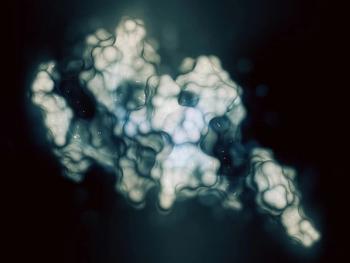
Oncology NEWS International
- Oncology NEWS International Vol 10 No 2
- Volume 10
- Issue 2
Intensive Chemo After Tandem Transplants for Myeloma Outcomes
SAN FRANCISCO-Multiple myeloma patients receiving intensive chemotherapy following bone marrow transplantation had "significantly superior" survival, according to a poster presentation at the American Society of Hematology (ASH) 42nd Annual Meeting. The survival advantages extended to patients with two or more risk factors for relapse after high-dose therapy.
SAN FRANCISCOMultiple myeloma patients receiving intensive chemotherapy following bone marrow transplantation had "significantly superior" survival, according to a poster presentation at the American Society of Hematology (ASH) 42nd Annual Meeting. The survival advantages extended to patients with two or more risk factors for relapse after high-dose therapy.
As previously identified in large cohort studies, significant adverse prognostic indicators for patients receiving high-dose therapy for multiple myeloma are cytogenetic abnormalities, especially deletion of chromosome 13; elevated B2M (2.5 mg/L or higher) prior to the first transplant; and more than 12 months of preceding standard therapy. Event-free survival and overall survival have been shown to decrease as the number of risk factors rises from 1 to 3.
Ramen Desikan, MD, and his colleagues at the Myeloma and Transplantation Research Center, University of Arkansas for Medical Sciences, Little Rock, reported that intensive consolidation therapy prolonged survival for multiple myeloma patients at high risk of relapse after tandem high-dose therapy.
Dr. Desikan added, however, that a randomized trial is needed to confirm the benefit of maintenance therapy in patients at high risk for relapse. They also called for a trial of maintenance chemotherapy in patients at low risk of relapse.
The Post-transplant Regimen
Eligible patients had completed tandem transplants, had no evidence of disease progression, and had platelet recovery to 100,000, creatinine of 2.0 g/dL or less, no active infections, and normal cardiopulmonary function.
The consolidation therapy used was DCEPdexamethasone 40 mg orally, along with continuous infusion of cyclophosphamide 300 mg/m2, etoposide 30 mg/m2, and cisplatin 15 mg/m2 daily for 4 days. This regimen has demonstrated efficacy as salvage treatment for patients relapsing after transplantation.
Supportive measures included G-CSF (Neupogen) and prophylactic ciprofloxacin, fluconazole, and acyclovir until granulocyte recovery to 2.0 × 109/L.
The first cycle of DCEP began 90 days post-transplant, with three additional cycles given 3 months apart. Of the 71 patients selected to receive DCEP, 35 patients had completed all four cycles by the time of the ASH meeting and 36 had discontinued treatment, 17 because of progressive disease.
When compared with the 142 controls matched for the prognostic factors cited above (cytogenetics, B2M levels, and duration of prior therapy), patients receiving DCEP had significantly superior survival rates.
Median event-free survival was 37 months for the DCEP group, compared with 15 months for controls. Median overall survival was 37+ months, compared with 31 months for controls. The survival advantage with DCEP cut across risk groups (see table below).
Lack of DCEP post-transplantation significantly worsened event-free survival on a multivariate analysis with DCEP as a variable.
Secondary acute myelogenous leukemia (AML) occurred in two patients receiving DCEP consolidation and in one patient in the control group.
Articles in this issue
almost 25 years ago
Activated T Cells Can Alter Behavior of Leukemic B Cellsalmost 25 years ago
Response Continues for at Least 8 Months with Ibritumomab Tiuxetanalmost 25 years ago
Synthetic Anthracycline Produces High Response Rates in SCLCalmost 25 years ago
Ibritumomab Tiuxetan Produces 73% Response Rate in B-cell NHLalmost 25 years ago
G-CSF Might Prolong Rituximab Responses in NHLalmost 25 years ago
Use of CAD Increases the Early Detection of Breast Cancer by 20%almost 25 years ago
Rituximab Plus Fludarabine May Be Good Alternative to Rituximab Plus CHOPNewsletter
Stay up to date on recent advances in the multidisciplinary approach to cancer.

















































































